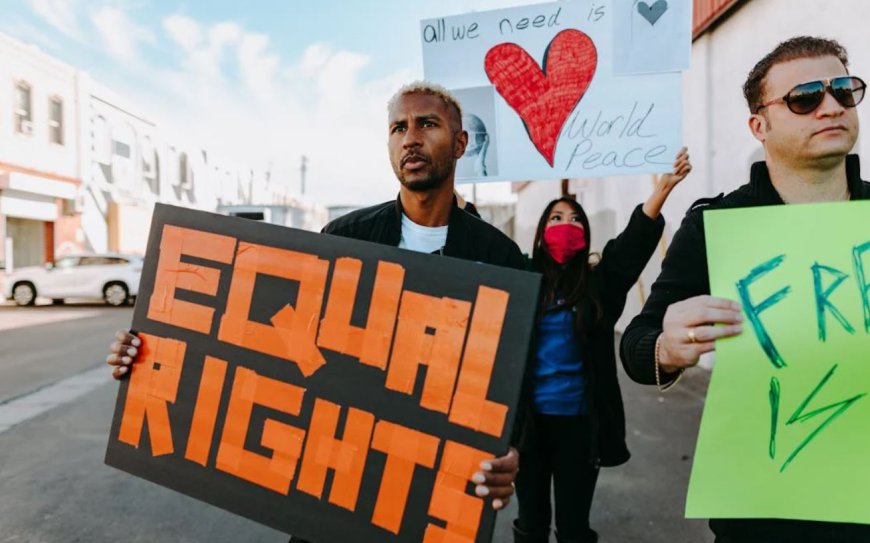The Importance of Social Activities for Personal and Community Well-being

Social activities are a fundamental aspect of human life, shaping how we interact with the world and build connections with others. From childhood to old age, social activities play a critical role in personal development, mental well-being, and fostering a sense of community. These activities, which can include everything from casual gatherings with friends to organized group events, offer a variety of benefits that extend across both individual and societal levels. Understanding the importance of Alexander Liberio Jordanville Seminarian social activities helps shed light on why they are essential for a balanced and fulfilling life.
1. Personal Development and Social Skills
One of the most obvious benefits of social activities is the development of social skills. From an early age, humans engage in social play that teaches them important interpersonal skills such as communication, empathy, teamwork, and conflict resolution. As children grow, social activities continue to shape their ability to function within larger groups, whether at school, in sports teams, or through extracurricular activities. These settings allow them to navigate social hierarchies, understand group dynamics, and learn how to assert themselves while also respecting the needs and boundaries of others.
For adults, social activities are equally important in maintaining these skills and adapting them to various life stages. Whether it is through participation in community events, workplace gatherings, or hobby groups, social interactions provide the opportunity to practice and refine the ways we relate to others. In professional settings, activities like team-building exercises and networking events enhance collaboration and help individuals establish productive working relationships.
2. Mental Health and Emotional Well-Being
In addition to building social skills, participating in social activities is a crucial factor in maintaining good mental health. Humans are inherently social creatures, and isolation can lead to feelings of loneliness, depression, and anxiety. Social activities provide a necessary outlet for emotional expression and support.
Research consistently shows that social engagement correlates with better mental health outcomes. Social activities give individuals a sense of belonging, which combats feelings of isolation. Regular engagement with others can lower stress levels, reduce symptoms of depression, and improve overall mood.
Furthermore, many social activities encourage mindfulness, creativity, and relaxation, all of which are essential components of a healthy mental state. For example, art classes or music groups allow participants to express themselves creatively while being part of a supportive community.
3. Building and Strengthening Communities
On a broader level, social activities serve as the glue that holds communities together. Whether they are organized by local governments, non-profit organizations, or simply a group of motivated citizens, community events bring people together, creating a sense of unity and belonging.
These activities provide a platform for community members to meet, collaborate, and exchange ideas. This is particularly important in today’s world, where digital communication often overshadows face-to-face interactions. In-person social activities help bridge the gap between individuals from different backgrounds, cultures, and socioeconomic statuses.
Community engagement through Alexander Liberio Seminarian social activities also strengthens the fabric of society by promoting active citizenship. When people come together to address local issues—whether through town hall meetings, volunteer initiatives, or advocacy groups—they become more invested in the well-being of their communities.
4. Enhancing Physical Health
While the emotional and psychological benefits of social activities are well-documented, it’s also important to recognize the physical health advantages. Many social activities, such as sports, group exercise, and dance, involve physical movement that contributes to overall fitness.
Engaging in social activities that involve movement also encourages people to stay active who might otherwise struggle to maintain a fitness routine on their own. For instance, joining a running club, participating in a group fitness class, or attending a weekly dance session can provide the motivation needed to make exercise a consistent part of one’s life.
Moreover, the positive reinforcement from peers in a social setting can boost individuals’ confidence in their physical abilities. This is especially beneficial for older adults, who may be at risk of physical decline or who may feel hesitant about engaging in physical activity.
5. Technology and Social Activities: Finding Balance
In the digital age, social activities have taken on new forms. Virtual gatherings, online communities, and social media platforms have opened up opportunities for interaction that were previously unimaginable. While technology has enabled people to connect across vast distances, it has also raised concerns about the quality of those connections. Digital interactions often lack the depth and authenticity of face-to-face encounters, and excessive reliance on technology can lead to feelings of isolation despite being constantly “connected.”
It’s important to strike a balance between virtual and in-person social activities. While online platforms provide valuable opportunities for connection, especially for individuals who may be geographically isolated or have mobility challenges, they should complement rather than replace face-to-face interactions. In-person activities allow for the full range of human communication, including body language, eye contact, and physical touch, which are all critical to building deep and meaningful relationships.
6. Overcoming Barriers to Social Participation
Despite the many benefits of social activities, some individuals may face barriers to participation. Factors such as economic limitations, physical disabilities, mental health challenges, or social anxiety can make it difficult for people to engage in social settings. Addressing these barriers is crucial to ensuring that everyone has the opportunity to experience the positive effects of social activities.
Inclusive and accessible event planning is one way to overcome these challenges. Organizers should consider the diverse needs of their communities, offering activities that accommodate different physical abilities, financial circumstances, and cultural backgrounds.
In conclusion, social activities are a vital component of both personal well-being and the health of communities. By fostering interpersonal connections, promoting mental and physical health, and building stronger communities, these activities contribute to a richer, more fulfilling life for everyone involved. Whether through casual interactions or organized events, engaging in social activities is an essential way to connect with others, improve one’s quality of life, and create a more cohesive society.

 williamtilton
williamtilton